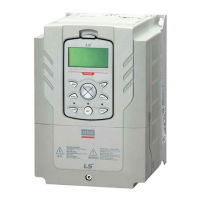Learning Protection Features
Overload warnings warn of an overload before an overload fault trip occurs. The overload
warning signal may not work in an overload fault trip situation, if the overload warning level (OL
Warn Level) and the overload warning time (OL Warn Time) are set higher than the overload trip
level (OL Trip Level) and the overload trip time (OL Trip Time).
6.1.4 Stall Prevention and Flux Braking
The stall prevention function is a protective function that prevents motors from stalling due
to overloads. If a motor stall occurs due to an overload, the inverter operation frequency is
adjusted automatically. When a stall is caused by overload, high currents induced in the
motor may cause motor overheating or damage the motor and interrupt operation of the
motor-driven devices.
In this case, the motor decelerates with optimum deceleration without a braking resistor by
using flux braking. If the deceleration time is too short, an over voltage fault trip may occur
because of regenerative energy from the motor. The flux braking makes the motor use
regenerate energy, therefore optimum deceleration is available without over voltage fault
trip.
To protect the motor from overload faults, the inverter output frequency is adjusted
automatically, based on the size of load.
Stall prevention
and flux braking
Stall Freq 1–Stall
Freq 3
Stall Freq 2–Stall
Freq 4
Stall Freq 3–
Maximum Freq

